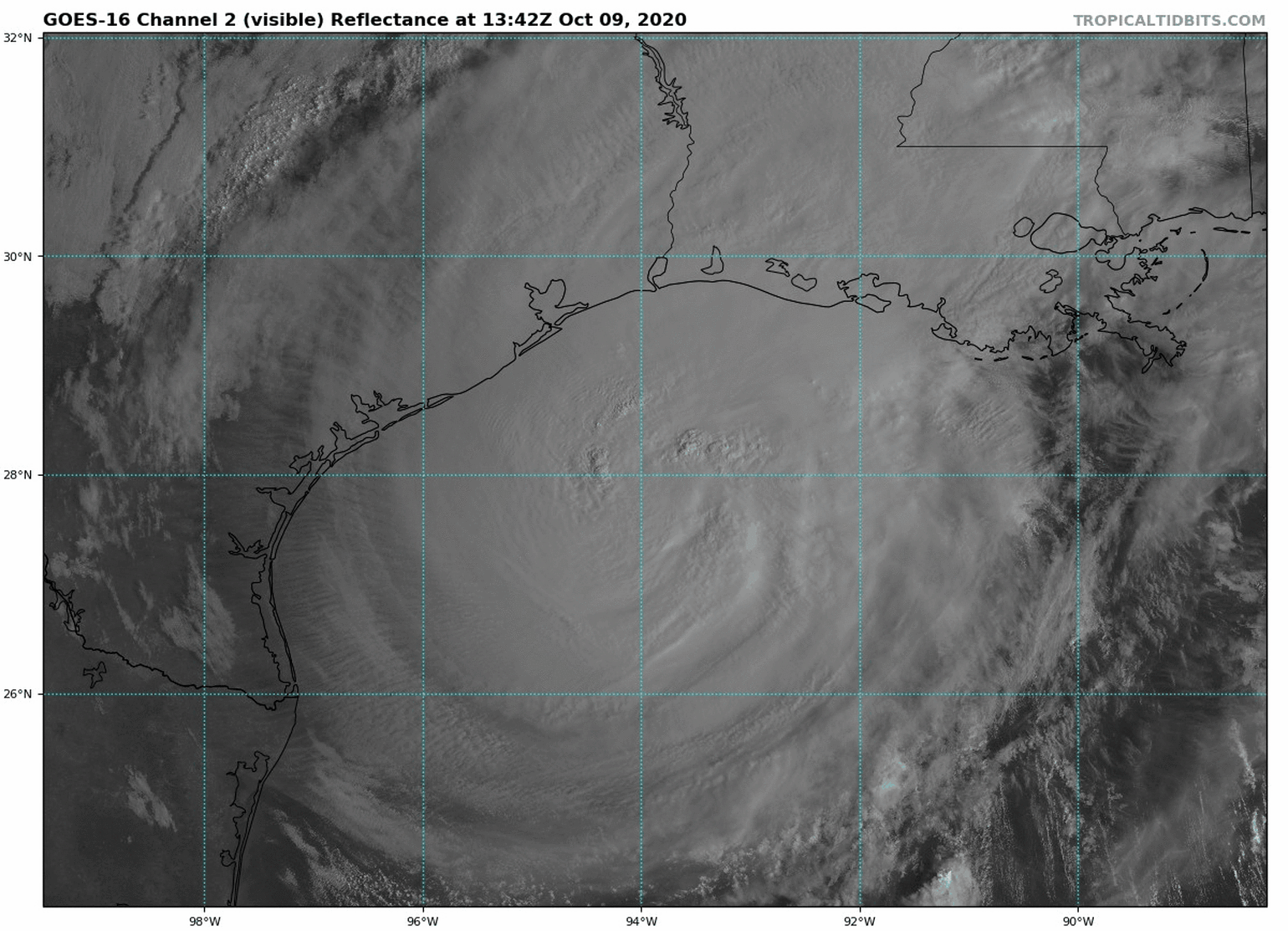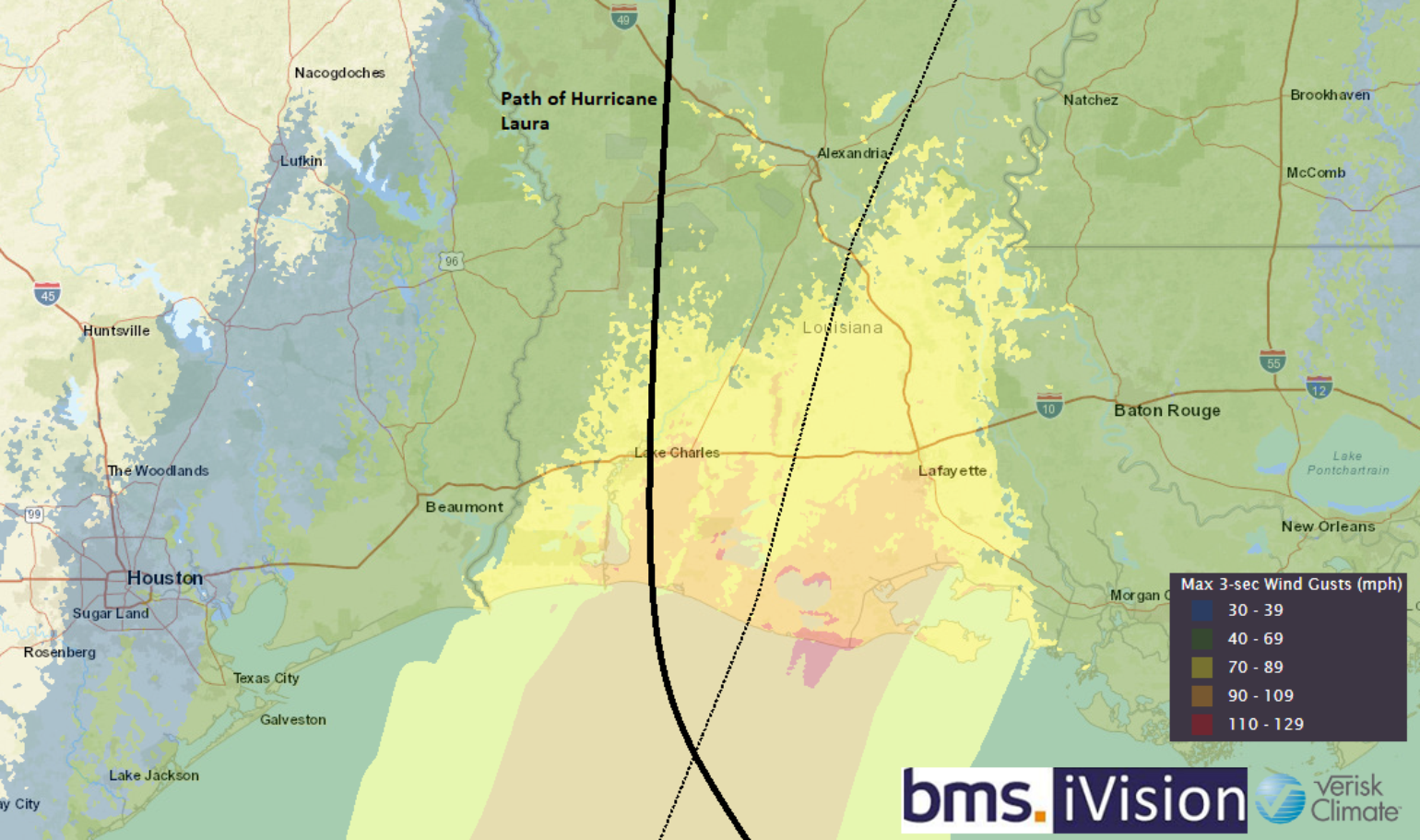By Andrew Siffert – Vice President / Senior Meteorologist
With Delta making landfall early this evening, the U.S. will have experienced ten, yes "10", named storms making landfall along the coastline. This breaks the record set back in 1916 for the most U.S. landfalling named storms in one season. This will also be the 5th hurricane to make U.S. landfall this year, and hopefully, this is the end and we do not break the record of six U.S. landfalling hurricanes - which occurred in 1886 and 1985.
Hurricane Delta is not winning any beauty contests this morning as it is starting to weaken. It is no longer over the very warm water and its size and wave action is causing it to mix with the water along Louisiana’s relatively shallow continental shelf, taking away some of the needed fuel for Delta to maintain its strength.
Delta is also now experiencing higher wind shear (20 – 30 kts), according to the University of Wisconsin Madison CIMSS wind shear analysis.

A trough of low pressure over Texas is steering Delta north and the higher wind shear is impacting the vertical structure of Delta’s core. Additionally, this low pressure is bringing both wind shear and mid-level dry air to the center of Delta causing parts of the storm to begin to erode. This should help weaken Delta before landfall. This is similar to what happened with major Hurricane Lili in 2002, which made landfall in central Louisiana, causing roughly $600 Million of loss to the insurance industry. So even a weakening major hurricane like Delta can have a significant impact. This is not a storm that will go away like Marco did earlier this season. The central pressure and large extent of Delta's wind footprint are locked in and it will take some time for these to change as Delta tracks toward the coastline. A weak Category 2 to a healthy Category 1 hurricane at landfall should be expected.
Wind Impacts
Delta will still be a dangerous storm upon landfall, just 10 – 20 miles east of where Hurricane Laura made landfall just six weeks ago. Because of this, some of the properties in the landfall area have already been damaged by Laura. Furthermore, although the winds will blow in slightly different directions at different intensities, this could cause further damage to already damaged structures. Below is the latest BMS iVision Verisk Respond 3-second wind gust product that shows Delta tracking at a slightly different angle than Laura did at landfall. This might lead to the strongest winds occurring in Louisiana’s less populated section between Lake Charles and Lafayette. Regardless, any shift in track to the east could mean stronger wind gusts could be experienced in Lafayette, Louisiana, which did not see the highest winds from Hurricane Laura. This could result in high treefall and roof damage to the city of 500,000 people.

Lake Charles, which took a direct hit from Laura, could see even more damage due to the temporary tarped roofs and boarded windows easily allowing water into these structures. This would further complicate the claims process. Below is some recent drone footage showing the recovery efforts in Lake Charles. These tarped structures will likely be vulnerable to Delta's wind speeds, even though Lake Charles will be on the weaker side of the storm. The other thing to consider is there are piles of debris everywhere from Laura, that could become projectiles if the western eyewall of Delta strikes the area.
https://twitter.com/CharlesPee...
As mentioned in yesterday's post, because much of the landfall areas are still recovering from Laura, this complicates the catastrophe modeling used to estimate losses for the insurance industry. This is due to the fact that modeling results do not consider a property’s potential damage that might have already occurred with Hurricane Laura. This is not a new problem for the insurance industry, as two named storms hitting the same area in the same year has happened before. This occurred both in Florida (Frances and Jeanne, 2004) and in Japan (Faxai and Hagibis, 2019). In these situations, there appears to be a potential for amplification of loss caused by successive hurricane landfalls. It has yet to be determined what offset might occur due to less exposure of risk because of existing damage that has already happened. No doubt, the claims could get complicated.
Rainfall Impacts
Rainfall impacts could be interesting as dry air is working its way into Delta's core. The result is much of the rainfall will be in front of the center of the storm, with the heaviest rain likely in the few hours before the eye’s arrival. This will be good for the traped roofs in the area as they now likely will not experience the high wind driven rain by the time Delta makes landfall. In fact, nearly 9 inches of rain has fallen near Zachary, Louisiana over the past few hours. Widespread flash flooding continues in this area. However, due to the fast forward speed of Delta, the impacts will be quick-hitting. This includes the rainfall, which should pass quickly and limit any flooding impacts.
Storm Surge Impacts
The wind field's overall size from Hurricane Delta along the very susceptible coastline of Louisiana could cause a storm surge up to 7-11 feet in some areas. Some of these areas experienced high storm surge from Hurricane Laura. The projected landfall area has a rural population with mostly swamp and wildlife refuge, so any storm surge impacts should be limited. The storm surge could push its way inland, but should be below the historical level for elevated buildings in the area. Therefore, storm surge flooding loss should be limited from Hurricane Delta.
Tornado Risk
In general, the overall risk of tornadoes should be lower than with a typical land falling hurricane, due to the limited convection and thunderstorm activity at the time of landfall. However, the Storm Prediction Center has issued a marginal and slight risk for tornadoes today across south-central into eastern Louisiana, as well as across southern Mississippi and extreme southwest Alabama.
Looking Ahead
There is an excellent chance that Delta might be the last land falling named storm of the 2020 Atlantic Hurricane season. There are currently no named storms in the 15 day ECMWF forecast, but remember, we have well over a month to go in the season. It is likely more named storms will pop up, and we are just three Greek names away from becoming the most active season on record. This would indeed be fitting for 2020 if this was achieved.
